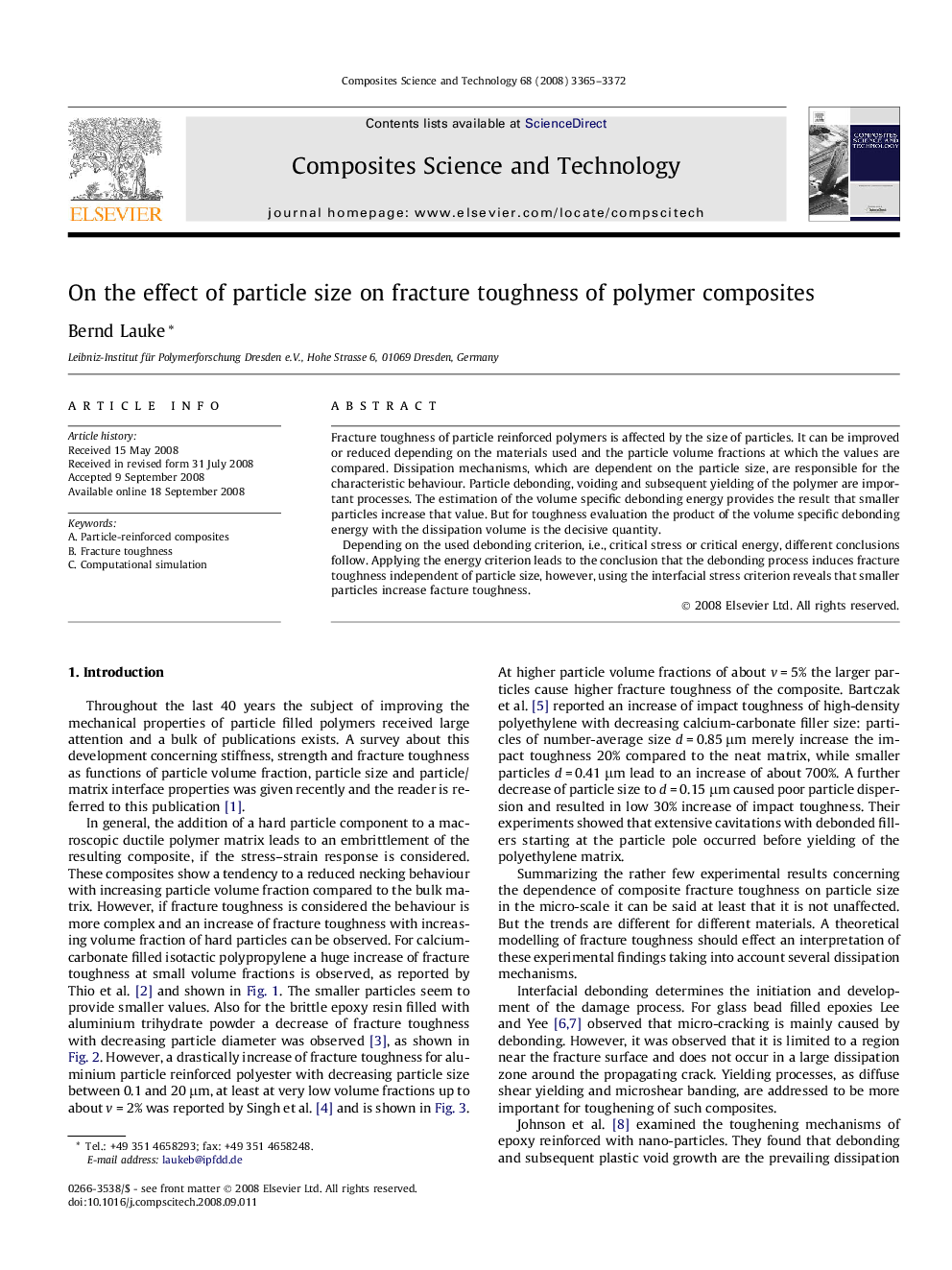| Article ID | Journal | Published Year | Pages | File Type |
|---|---|---|---|---|
| 821789 | Composites Science and Technology | 2008 | 8 Pages |
Fracture toughness of particle reinforced polymers is affected by the size of particles. It can be improved or reduced depending on the materials used and the particle volume fractions at which the values are compared. Dissipation mechanisms, which are dependent on the particle size, are responsible for the characteristic behaviour. Particle debonding, voiding and subsequent yielding of the polymer are important processes. The estimation of the volume specific debonding energy provides the result that smaller particles increase that value. But for toughness evaluation the product of the volume specific debonding energy with the dissipation volume is the decisive quantity.Depending on the used debonding criterion, i.e., critical stress or critical energy, different conclusions follow. Applying the energy criterion leads to the conclusion that the debonding process induces fracture toughness independent of particle size, however, using the interfacial stress criterion reveals that smaller particles increase facture toughness.
